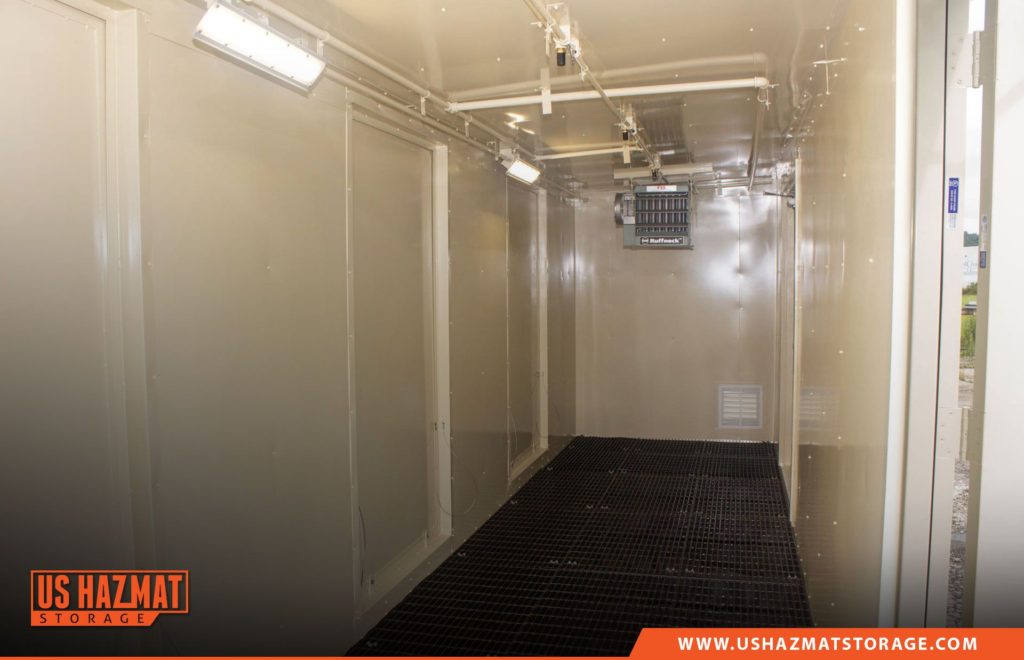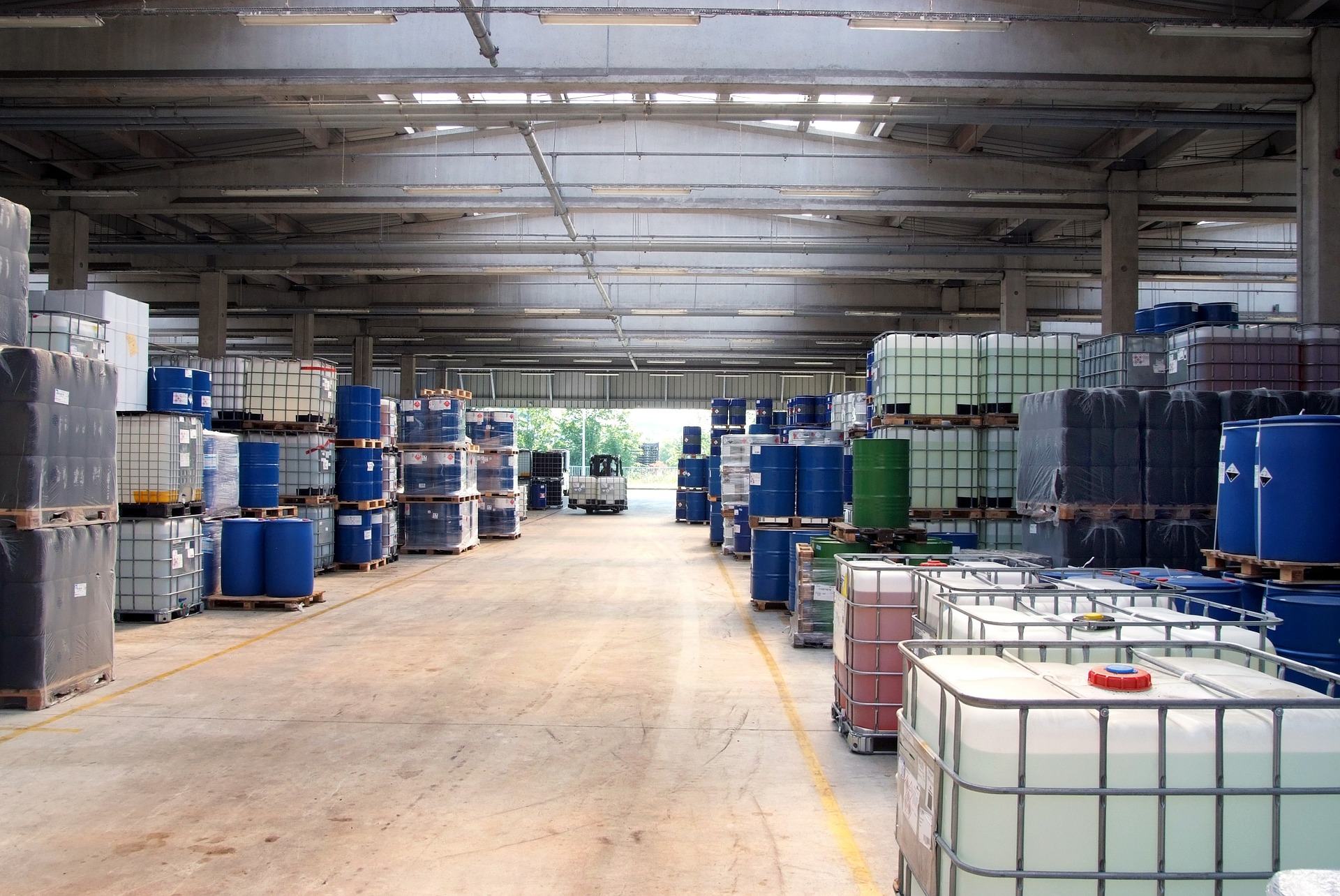Flammable and combustible liquids fuel American industry. From oils and lubricants to fuels and powerful degreasers, heavy equipment and machinery depends on these liquids to meet lofty quotas and to get the job done. Where would we be without fuels and solvents? America’s industrial muscle would’ve wasted away from atrophy without some much needed fuel. Mechanization, after all, would not have been possible without high octane spirits and our great nation’s indomitable quest for next-level engineering. But the same flammable liquids that rev our engines to new limits pose dangers to employees and the environment. Investing in compatible flammable and liquid storage is just as important to manufacturing as the invention of the modern assembly line.
What is a Flammable Liquid?
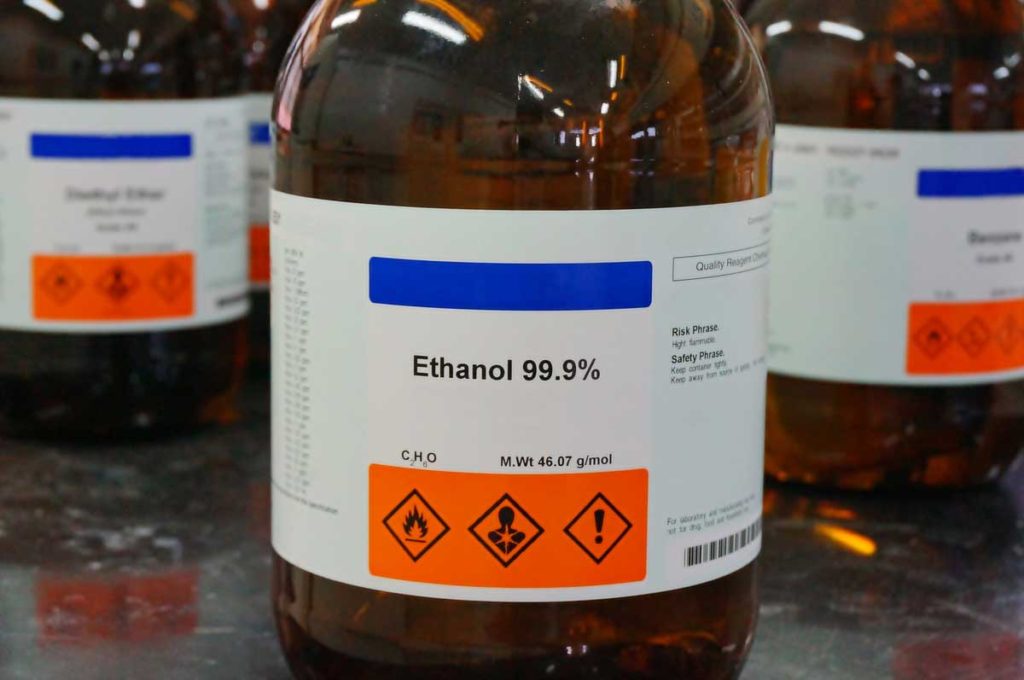
Flammable and combustible liquids are umbrella terms that cover a wide variety of industrial grade solvents and fuels. When we say the words “flammable,” we’re not just talking about gasoline or alcohol. Flammable liquids can ignite easy and burn through an area with a voracious appetite for destruction and catastrophe. As a result for their propensity for carnage, flammable and combustible liquids receive OSHA grouping based on flashpoints. Essentially, a flashpoint is the bare minimum temperature at which a liquid gives off just enough vapor concentration to form an ignitable mixture with air near the surface of the mixture.
Category 1 Flammable Liquids includes liquids receiving flash points in the range of below 73.4 degrees F and having a boiling point at or below 95 degrees.
Category 2 Flammable Liquids covers those substances having flashpoints below 73.4 degrees and boiling points above 95 degrees.
Category 3 Flammable Liquids are defined by liquids having flashpoints at or above 73.4 degrees and at or below 140 degrees.
Category 4 Flammable Liquids covers liquids with flashpoints above 140 degrees and at or below 199.4 degrees. When heated for use to within 30 degrees of flashpoint, this material must be handled with the same guidelines for a Cat 3 liquid with flashpoint at or above 100 degrees.
What is a Flammable Storage Cabinet or Warehouse? Why Do I Need One?
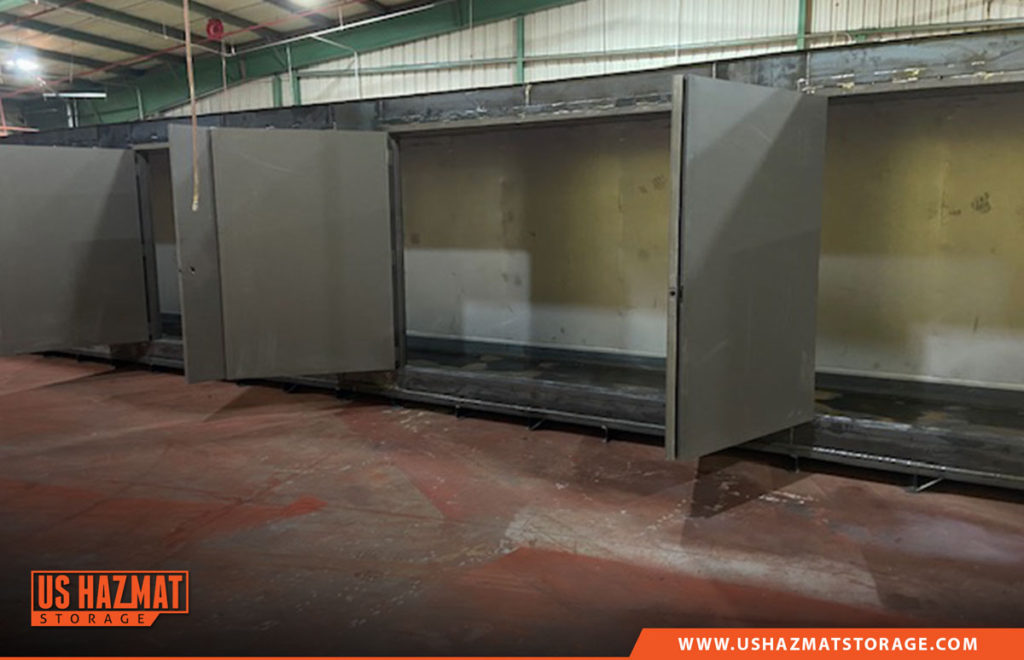
As you might have inferred from the serious tone of the described flashpoints, dire consequences exist for improper flammable and combustible liquid storage. Severe admonishing in the form of civil penalties and fines will undoubtedly descend upon crestfallen businesses who opt for the easy way out when it comes to proper storage. To avoid unnecessary fires and injuries, OSHA requires all flammable liquids to be stored in a flammable storage cabinet. So what exactly is a flammable storage cabinet? Well, the technical language is a bit of a misnomer. Large chemical payloads require a lot of room for storage to allow for the easy storage and removal of dangerous liquids, as well as for optimal ventilation and other safety features.
What Are Flammable and Combustible Liquid Storage Cabinets Made of? How Much Can I Legally Store in Them?
Flammable storage cabinets should be made of metal or wood, but most importantly these chemical storage lockers must be built to withstand internal temperatures of the cabinets to 325 degrees F during a 10-minute fire test. During this heated exchange, the joints and seams of the chemical storage locker must remain tight and closed. Talk about a trial by fire!
OSHA limits the amount of flammable liquids that can be stored in any one locker to no more than 60 gallons of Cat 1, 2, or 3 liquids or 120 gallons of a a Cat 4 flammable and combustible liquid. Federal guidelines allow for the storage of a mixture of Cat 1, 2 and 3 liquids in one cabinet, but the total amount should not surpass 60 gallons altogether. U.S. Hazmat Storage’s fire-rated chemical storage lockers can easily accommodate these stringent guidelines and regulations with heavy duty American steel that allows for unique compartmentalization and separation of differing classes of flammable liquids. Our chemical storage lockers are engineered and battle tested to withstand extreme temperatures that can compromise volatile chemical payloads.
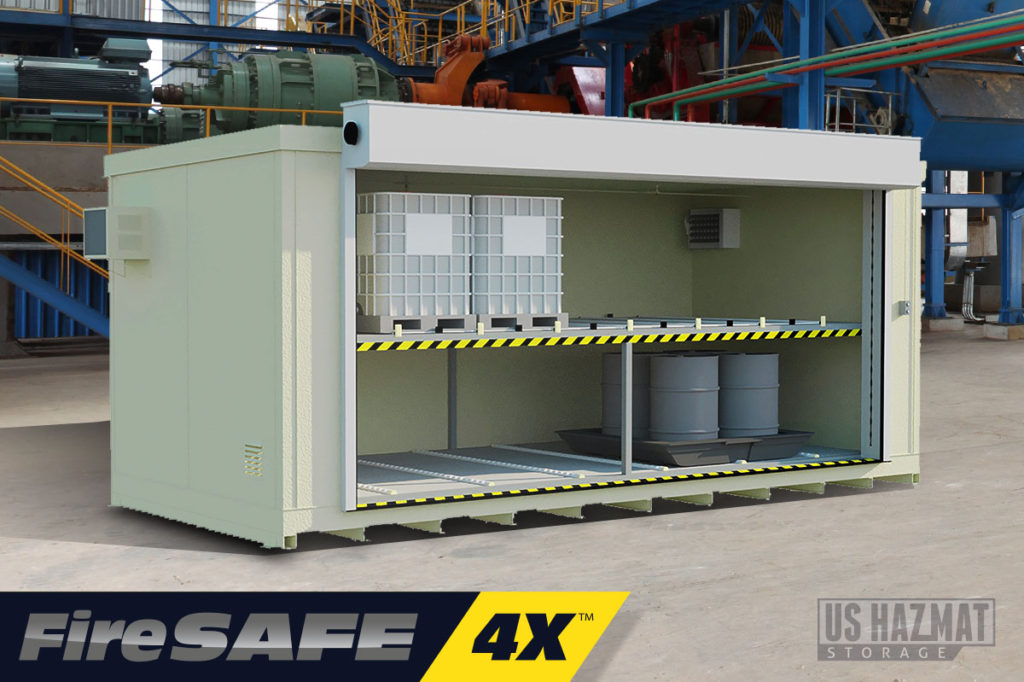
Innovative Fire Suppression and Containment
Fires can’t rage if you do not provide the ingredients and ideal conditions for combustion. Mechanical and passive ventilation systems prevent dangerous volumes of flammable vapors from congregating within the flammable storage locker. As a reminder, it only takes one errant spark to cause a domino-effect fire that can engulf an entire operation. To minimize the threat of any inadvertent fires from spreading, we offer a unique dry chemical fire suppression system that can easily and quickly douse flames.
